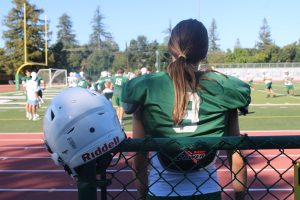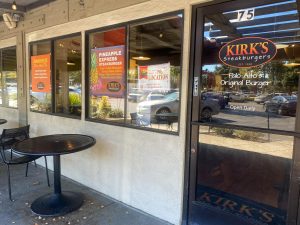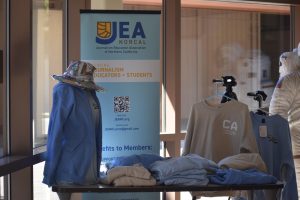Apple TVs to replace current projectors
May 25, 2023
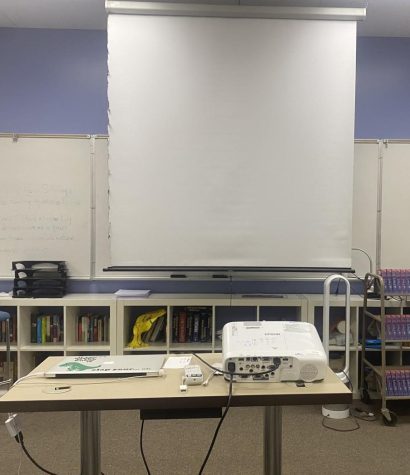
As part of Palo Alto Unified School District’s initiative to enhance visual educational quality in instructional settings, Apple TVs will replace the current technological system of projector tools and SMART Boards in all Palo Alto High School classrooms, with an anticipated completion by the start of next school year.
The “Classroom Refresh Project” is an initiative by the district to allocate equal technological resources to each classroom. The project has been ongoing since June 2021, but has been “a slow moving process due to supply chain and labor availability issues,” according to the official PAUSD School Board Docs.
During a May 9 school board meeting, authorization was granted for the installation of the monitors in over 240 classrooms spread throughout Palo Alto High School, Gunn High School and all three middle schools, marking the final measure of the project.
According to Assistant Principal Erik Olah, in most classrooms, teachers currently use a variety of different projector systems and a few use the physical-touch SmartBoards.
Olah said most of these systems are outdated and have caused challenges in instruction.
“Our projectors are dying all over campus — half of them barely work,” Olah said. “So it [the replacement] has been a much-needed thing.”
According to Olah, Paly has been testing several of the Apple TV systems during the past year in the world language classrooms as preparation for the campus-wide installation next school year. Olah said one of the main priorities of the replacement is to completely alter the current technological system.
‘The idea of this technology refresh from the district is that every classroom uniformly will have the same thing,” Olah said. “They [the district] want to maintain that going forward. It just sets that so it’s not like ‘oh, whoever has the most recent update to their classroom, you get new technology, right?’ No, it’s meant to be like, ‘Okay, everybody’s got the same stuff and you should create that standard going forward.’”
Under the current system, teachers write directly on the whiteboard that is being projected on or by using the physical SMART Board.
With the Apple TVs, teachers are unable to use the touch screen, but have the option to write on the monitor via a provided iPad after connecting. Additionally, document cameras — visual tools for displaying an object to a large audience — are available.
According to Advanced Placement Psychology and World History teacher Christopher Farina, although there have been some concerns from teachers about the loss of the touch-focus, the general consensus is positive.
“I don’t think losing like that touch component of it is a big deal,” Farina said. “Most teachers, from the people that I’ve talked to, didn’t really make use of the SMART Board functionality so that doesn’t seem like a big loss.”
Farina said there are advantages to using the newer system.
“With an iPad, you could take a picture of whatever it is that you’re trying to annotate and then you would just annotate it on the iPad instead of on the whiteboard,” Farina said. “So it’s definitely like a different kind of feel and I think probably overall that part is not quite as good. But ultimately, I think it’s going to be a better system.”
According to Olah, the school will ensure that teachers maintain a smooth transition to the new system.
“It [teaching] has changed, but we’re going to be training teachers and there’s opportunities for teachers to learn,” Olah said. “Honestly, it’s pretty easy to use in most cases and it’s slight changes in teaching styles. But if anything, I think it’s giving more options.”
Advanced Placement United States History teacher John Bungarden agreed with Olah and Farina’s sentiments by saying the replacement will be an improvement for teaching.
“It [Apple TVs] will produce a much sharper image, so it’d presumably enhance instruction,” Bungarden said. “It [the Apple TV] appears to be an improvement over the projectors in at least this room.”
Junior Sarp Kendirli said he feels the quality of education will improve with the implementation of the monitor system.
“[In] many of the classrooms, there’s either technical problems with the [projectors], teachers struggling to get them up or [the screen is] just too small for some people to see it in the back and it just kind of gets in the way of learning sometimes,” Kendirli said. “This new technology is more useful as the Apple TVs provide a much more clear image for everyone in the class to see [which] could help visual learners with understanding the material.”



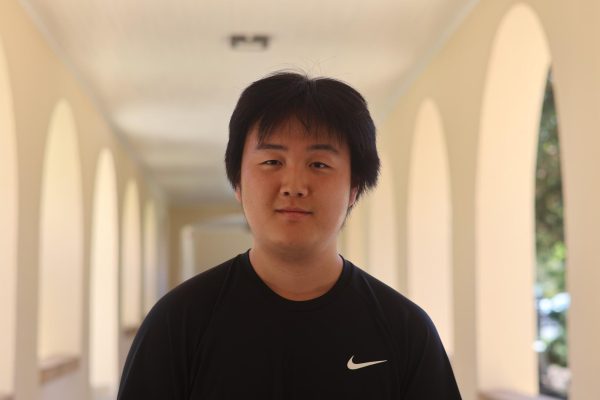

![In the fourth period AP Calculus BC class at Palo Alto High School, senior Crystal Li places her phone in the “phone jail.” Starting July 2026, this may become a normal procedure across schools in California thanks to Governor Gavin Newsom signing the Phone-Free School Act into law last week. According to Li, there are often unnecessary complications that come with enforcing phone restrictions. "It becomes a hassle putting it [a phone] in [the phone jail] before class, and taking it out after class," Li said. "There have been multiple times where kids from other periods interrupt the teacher to come back in and pick up a phone they left."](https://palyvoice.com/wp-content/uploads/2024/09/IMG_7386-3-300x225.jpg)
